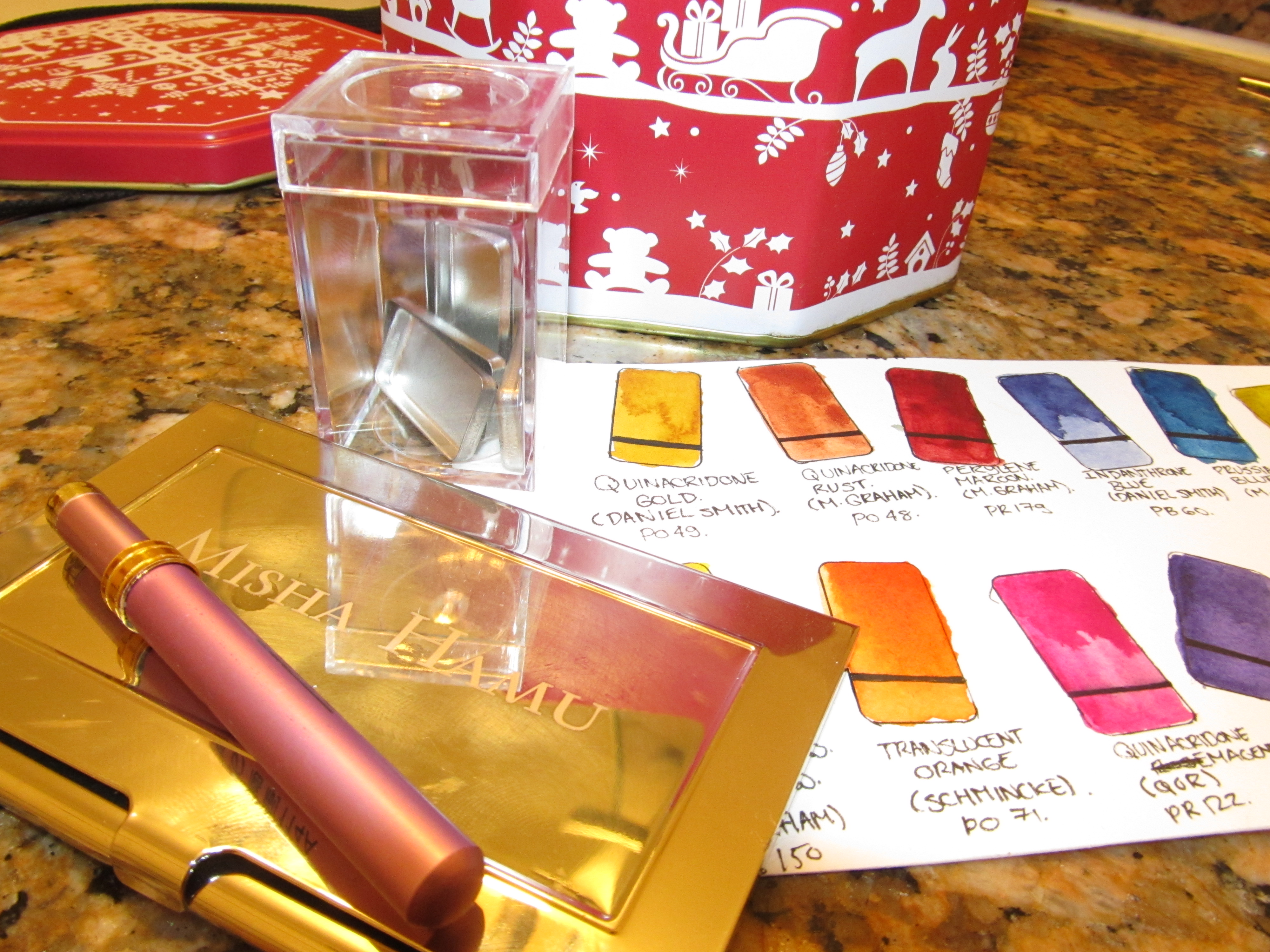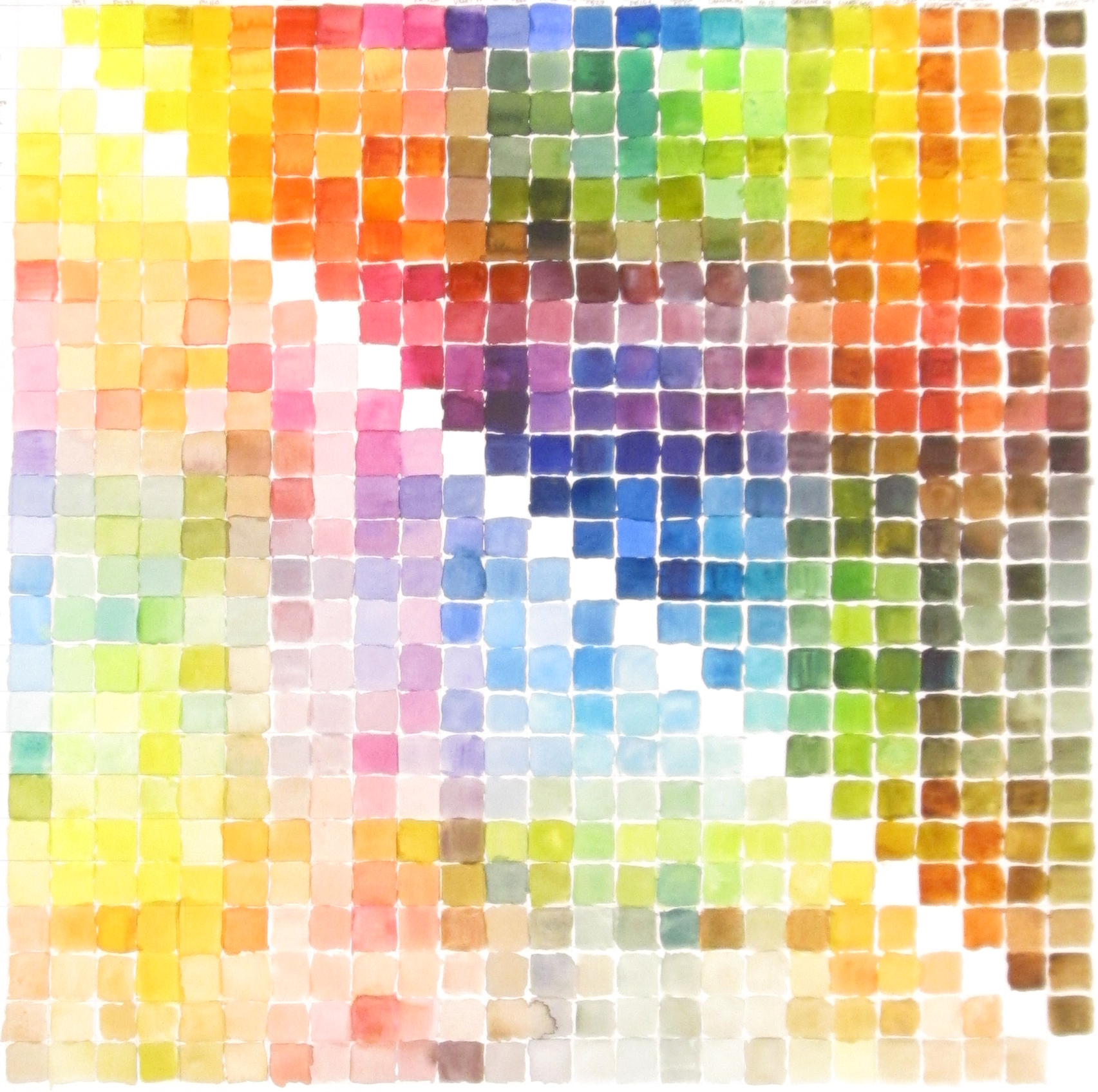This month, I am participating in Inktober.
I am a big fan of month-long challenges. A month is just about long enough to create a lasting habit (such as creating art every day, or keeping my kitchen clean). Last year, I did a “30 Pieces in 30 days” watercolour art challenge in September, where I created 30 6×6 watercolour pieces based on natural science subjects I collected on my way to the studio, all of which were made available for sale.
This was a great challenge for me, as I wanted to practice a variety of watercolour skills and techniques, and I had a strong tendency to get caught up in details and take a very long time finishing work. Having to create a “finished”, sellable piece every single day while working a dayjob and renovating my home, I learned to speed up, and really developed my watercolour skills over the course of the month. The challenge also generated a large body of work, and specifically small, affordable pieces, which have been a big hit at studio tour events.
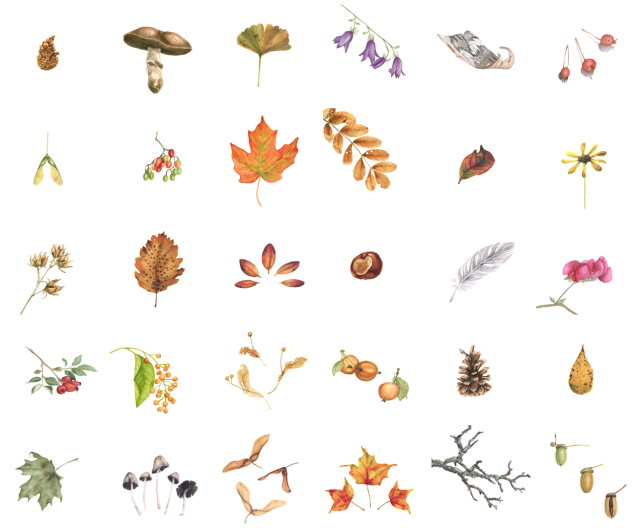
30 Pieces in 30 Days – September 2016 Natural Science Watercolour Challenge Pieces
I’ve been eager to do another month-long challenge. Last month was a little crazy with deadlines and travel, so I decided to participate in Inktober instead this year.
Inktober was started by Jake Parker, a character designer/comic illustrator, who wanted to develop his inking skills using brushes and brush pens. Other artists have adapted the challenge to suit their own priorities, doing everything from sketching in ballpoint pen to painting in coloured inks to digital “inking”. I am drawn to the initial concept behind the challenge, but being in a very different branch of illustration from Jake Parker, I’ve come up with my own set of goals and guidelines for my Inktober entries this year:
My Inktober Goals:
- Create 31 finished, sellable ink pieces by the end of the month, in addition to other scheduled illustration work
- Develop a better understanding and intuition of tonal values
- Develop my skills in monochromatic shading techniques such as cross-hatching, stippling and simplified shapes
- Experiment with textures in ink washes
- Improve my brush handling skills (useful for watercolour as well as ink) by using brush techniques with ink.
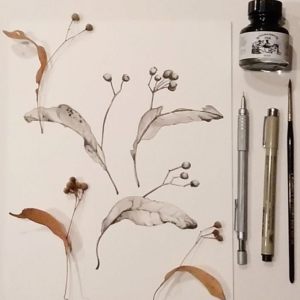
Inktober 2017: Linden Pods (Day 3)
- BONUS: Start bridging the gap between my detailed natural science illustration work and my interest in urban sketching, see if I can start to discern a cohesive “look” across both.
My Inktober Rules:
- All pieces must incorporate some form of liquid, black ink (technical pens, brush pens, ink and brush, etc)
- Pieces may be rendered on white or toned paper. White ink and white pencil may be used to develop tonal range on toned paper.
- Pencil or ballpoint pen may be used for initial sketch, but the finished lines and shading should be primarily in liquid ink.
- No coloured drawing media (coloured inks, watercolors, coloured pencils other than white, markers, etc)
- Subjects should be drawn from life/own reference, but no limits on subject matter (natural science, architecture, life drawing, still life, etc)
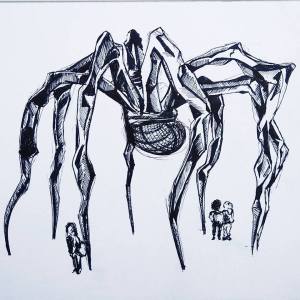
Inktober 2017: Spiders are the Providers (Day 1)
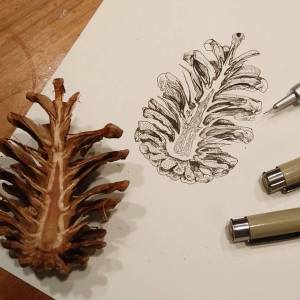
Inktober 2017: Divided Pinecone (Day 2)
I’ve done a few pieces for Inktober 2017 already and I’m pretty pleased with the results so far. I will post the complete collection on this site when I am done the challenge, and all pieces will be available for sale. If you would like to see each piece as I complete it, I will be posting them on my Instagram and Facebook Page


